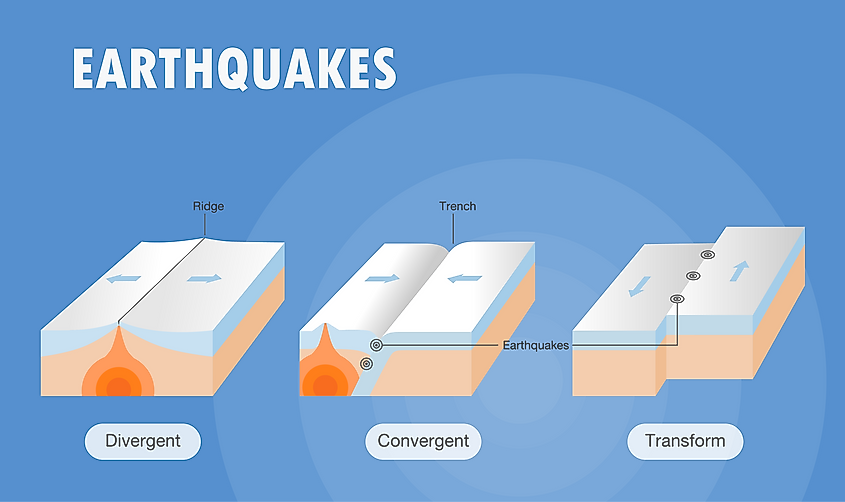What Causes Earthquakes At Plate Boundaries
Earthquakes are a common natural phenomenon that have always been a source of fascination and fear for humans. While they can be both devastating and intriguing, they are also complex geological events that require a certain level of expertise to understand. In this article, we will explore the underlying causes of earthquakes and the different types of plate boundaries that can lead to seismic activity.
The Three Types of Plate Boundaries
Plate boundaries are the edges where tectonic plates meet. There are three main types of plate boundaries: divergent, convergent, and transform.

Divergent boundaries occur when two plates move away from each other. This movement often creates a rift or valley along the boundary as magma rises from the mantle to fill the space between the two plates. As the magma cools and solidifies, new crust is formed in the space between the plates.
Convergent boundaries occur when two plates move towards each other. The subduction of one plate under the other creates a deep ocean trench where the two plates meet. As the plate is forced deeper into the mantle, it melts and forms magma, which can rise to the surface and create volcanic activity. The collision of two plates can also result in the formation of mountain ranges like the Himalayas.
Transform boundaries occur when two plates slide past each other horizontally. This type of plate boundary does not create or destroy crust, but it can cause significant seismic activity as the plates grind against each other.
The Underlying Causes of Earthquakes
Now that we understand the different types of plate boundaries, we can explore the underlying causes of earthquakes. Simply put, earthquakes occur when there is a sudden release of energy within the Earth's crust. This energy is usually created by the movement of tectonic plates along a fault line, which is a fracture in the Earth's crust.

When two tectonic plates are moving along a fault line, friction between the plates causes stress to build up. As the plates continue to move, the stress on the fault line increases until it reaches a breaking point. When the fault line finally breaks, energy is released in the form of seismic waves, which cause the ground to shake and vibrate.
It's important to note that earthquakes can also be caused by other natural phenomena like volcanic activity, landslides, and even meteorite impacts. However, the majority of earthquakes are caused by tectonic plate movement along fault lines.
Conclusion
Earthquakes are a complex and fascinating natural phenomenon that can be both destructive and informative. Understanding the different types of plate boundaries and the underlying causes of earthquakes can help us predict and prepare for seismic activity in the future.
Whether you're a scientist studying tectonic plate movement or simply an enthusiast interested in the Earth's natural wonders, there's no denying the importance of earthquakes in shaping our planet. By continuing to study and learn about these geological events, we can gain a deeper understanding of our world and the forces that drive it.